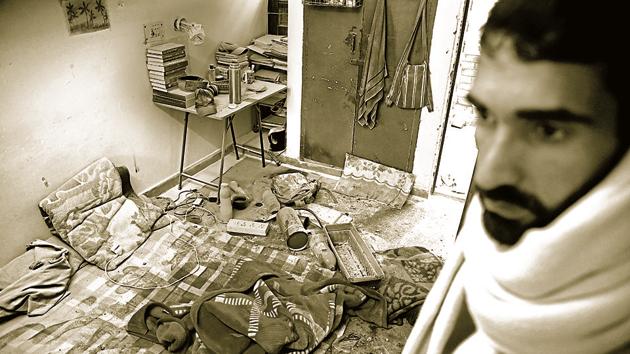JNU: The attack and the resistance
As violent physical force was unleashed, students rose to forge our democratic future
Recent months have seen university campuses become the nerve centres of democratic political life and scenes of resistance against authoritarianism and brutal police repression. The horrifying events that unraveled on Jawaharlal Nehru University (JNU) campus on Sunday night were a part of this, but they also showed some important differences.

This time, it was not uniformed policemen who entered JNU to unleash an assault, but “masked” goons wielding lathis and iron rods who conducted a well-planned, targeted, brisk and brutal attack on the students and teachers. The police, which has detained protesting students by the hundreds in recent weeks, showed its complicity in the violence by its inaction, not intercepting or detaining even a single assaulter. The university administration, which has been quick to take punitive action against minor acts of peaceful protest by students and teachers, issued statements that misrepresented the events and failed to even so much as mention the entry of armed groups into the campus.
This is the situation that JNU finds itself in today— structures that have been designed to protect the life of this academic institution have turned against its community of students and teachers. The university’s administration, the state’s police force, and groups trained for violence by the ruling party appear be part of this destructive campaign.
Students in JNU have been agitating over the past two months against a hefty and arbitrary hike in hostel fees sprung on them mid-semester, which threatened to make staying on in the university unviable for many. What was striking about this agitation has been the intense involvement of large numbers of students who do not usually play an active role in student organisations and campus politics. The fee hike, by its evident unfairness, seems to have touched something deep in the moral sensitivity of students, linking it to the vital issue of affordable public education in India.
Perhaps it was not just the increase in fees that elicited this intense response. It was also the high-handedness of university administration, which over the past four years ever since the present vice-chancellor was appointed, has refused to work as part of the university community, resorting to arbitrary or politically-motivated decisions and punitive measures, instead of consultation and collective decision-making. The recent crisis around the registration of students for the new semester must be seen against this background. The administration has dealt with this through denial and by painting a false picture of the situation.
The past few days saw the introduction of violence into the campus as a new instrument for dealing with student protests. Protesting students have been alleging physical assaults by security guards and Akhil Bharatiya Vidhyarthi Parishad (ABVP) students, supported in certain instances by some teachers. Images and videos show this violence, which, in some cases, has involved physically threatening teachers who have insisted on a resolution to the present crisis through dialogue.
This spate of violence culminated in Sunday’s vicious attack by an organised gang with lathis and iron rods on a large gathering on peace and democracy organised by JNU Teachers’ Association, in which several teachers and students were badly injured. They moved on to some hostels and teachers’ residences in order to attack. Several students and teachers have been badly injured in this attack and about 20 people had to be admitted to hospitals. This was followed by the mobilisation of crowds at the university’s main gate shouting aggressive, bloodthirsty slogans against the JNU community, and roughing up people who do not share their views. The non-violent unity and resolve of students and teachers in the face of this aggression, and the support they received from the academic community and civil society in the city, eventually forced the goons to leave and the hostile crowd to withdraw from the gate. The alleged connivance of the administration with the violence has made the campus unsafe for academic work.
It is evident that what is at issue in Sunday’s violence is neither the fee hike nor the registration for the new semester. This a planned attack on the vital role students have played in recent protests against the violent, anti-democratic agenda of the government and the ruling party. We have seen this in Jamia Millia, Aligarh Muslim University, Jadavpur University and several other campuses. Students — pushed to the brink by an unprecedented sense of oppression and the rule of untruth and hatefulness — have adopted a staunch stance of refusal and created a new politics unanticipated by the ruling political calculus. Terms such as “anti-national” do not seem to do the work of hatred effectively anymore. Students are now reclaiming the national flag and the national anthem from divisive politics, not as insignia of the state, but as symbols of freedom and resistance. The Constitution has acquired a new political salience.
What we saw in the recent violence is a desperate last-ditch throwing away of all rule books and pretences, and an attempt to destroy the spirit of resistance through violent physical force in all its ugly nakedness. At stake in the confrontations in JNU and other campuses are no less than our democratic futures being freshly forged by students.
Atul Sood and Udaya Kumar are professors at Jawaharlal Nehru University, at the Centre for the Study of Regional Development and the Centre for English Studies respectively.
The views expressed are personal.






